When most people think about what makes a detailing product great, they think about what’s inside the bottle. The ingredients. The chemistry. The performance that brings. After all, that’s where the magic is.
But there’s another piece of the equation that too often gets overlooked: the bottle itself. Packaging isn’t just a vessel. It’s part of the product. It’s a safeguard, a stabilizer, a shield. The wrong packaging can take a world-class formula and reduce it to something mediocre before it even reaches your hands.
That’s why at Dr. Beasley’s, you’ll notice something consistent across our product line: amber bottles. We use two kinds, depending on the product. For everyday formulations, you’ll find amber PET bottles that are durable, recyclable, and protective. For our most precious nano-ceramic coatings, you’ll see amber glass bottles, the gold standard for protecting sensitive chemistry.
To get a better understanding of why we use amber bottles, let’s dive into why chemistry can be sensitive, how amber PET & glass protect our formulations, and the difference between glass, plastic and other bottling materials.
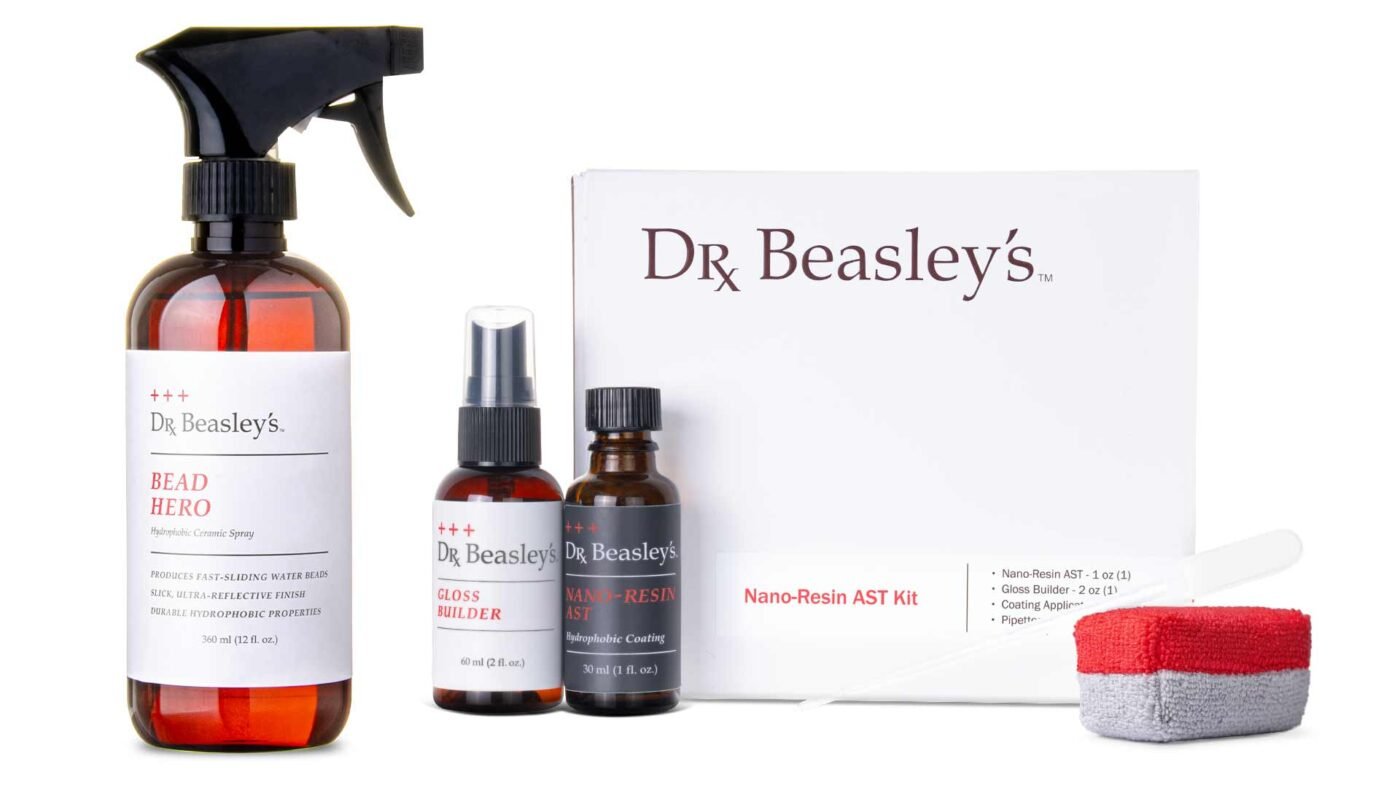
Light — The Invisible Enemy of Chemistry
Sunlight and artificial light alike carry energy that can degrade chemistry. Ultraviolet (UV) radiation is especially damaging. It can break bonds in molecules, a process known as photodegradation.
In detailing products, this can mean:
- Surfactants losing cleaning power.
- Polymers in coatings oxidizing and weakening.
- Enzymes breaking down and becoming inactive.
- Fragrances souring or changing character.
Once this happens, performance is compromised. That’s why protection from light is essential.
Why Amber Is the Gold Standard
Amber coloration filters out the most harmful wavelengths of light — especially in the 300–500 nanometer range, which includes UV and high-energy visible light. This drastically slows degradation.
That’s why you’ll find:
- Pharmaceuticals in amber vials.
- Essential oils packaged in amber glass.
- Beer stored in amber bottles to prevent spoilage.
Billion-dollar industries depend on amber. So do we.
Why We Use Amber PET for Most Products
Amber glass is classic, but not always practical. For the majority of our product line, amber PET (polyethylene terephthalate) is the better choice.
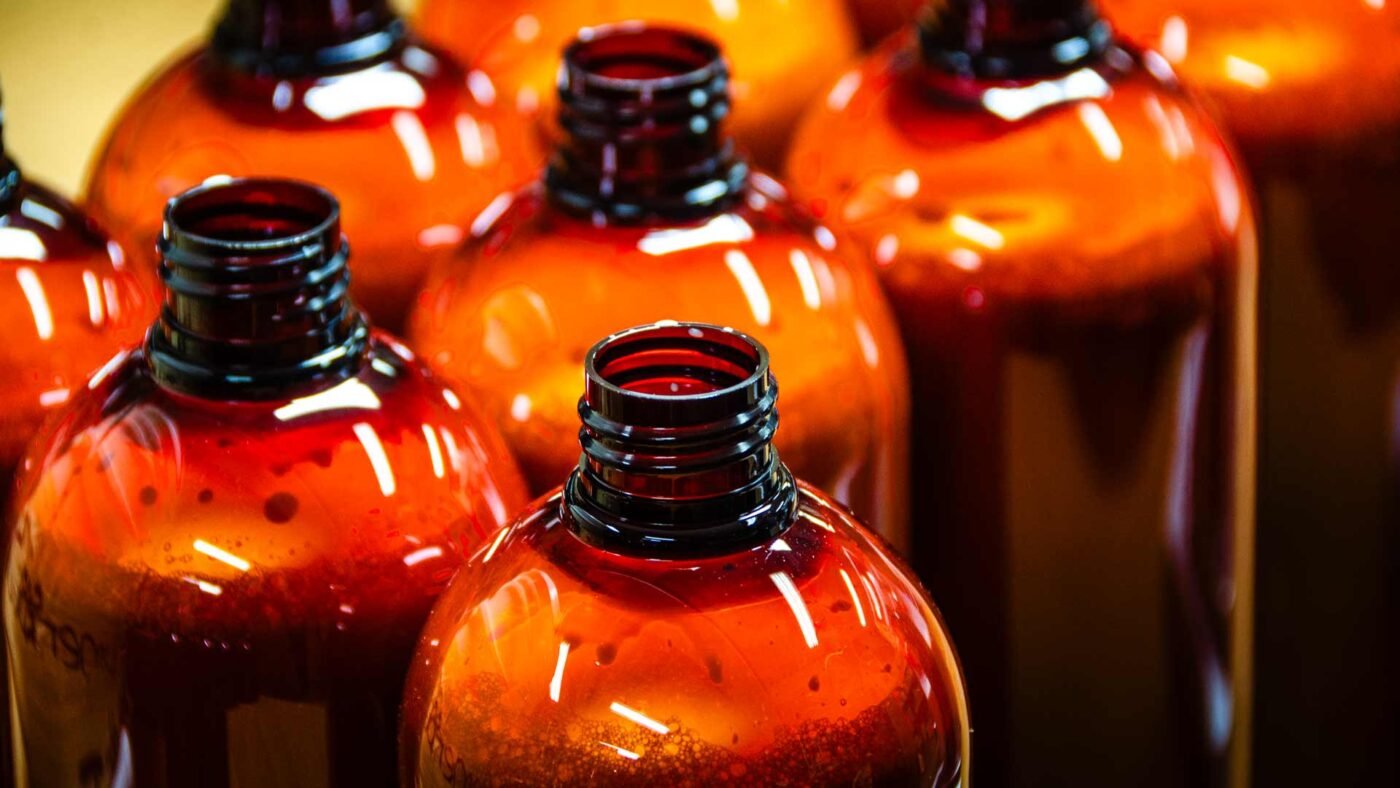
Amber PET:
- Blocks 90–98% of harmful UV radiation when pigmented.
- Is lightweight, reducing shipping costs and carbon footprint.
- Is shatter-resistant, safe in shops and garages.
- Works with sprayers, squeeze tops, and closures detailers need.
- Is the most recycled plastic in the world, accepted in virtually all programs.
Amber PET is tough enough to handle chemistry, clear enough to let you see what’s inside, and protective enough to keep products fresh. It’s the perfect balance of science, practicality, and sustainability.
Why We Use Amber Glass for Nano-Ceramic Coatings
Our nano-ceramic coatings are different. They’re concentrated, complex formulations sold in small volumes (.5 oz or 1 oz). They’re also among the most precious and expensive products we make. These require maximum stability.
That’s why we house them in amber glass bottles.
Amber glass:
- Blocks up to 99% of UV light, across a broader spectrum than PET.
- Is chemically inert, meaning zero interaction with sensitive chemistry.
- Provides a premium, lab-grade feel appropriate for high-end coatings.
- Signals the seriousness and value of the chemistry inside.
When you hold one of our amber glass vials, you’re holding more than a bottle. You’re holding a guarantee that the coating inside has been protected to the highest standard.
PET vs Glass vs Other Plastics
Not all plastics or bottles are equal.
- PVC: Cheap, unstable with solvents, environmentally poor.
- HDPE: Strong, chemical-resistant, but less UV protective.
- PP: Good for closures, not ideal for bottles.
- PET: Clear, strong, recyclable, UV protective (with amber pigmentation).
- Glass: Chemically inert, best UV protection, premium, but heavy and fragile.
For everyday use, PET is the smart choice. For high-value, highly sensitive chemistry, glass is the best. That’s why we use both — strategically.
Shelf Life and Stability
Amber PET ensures shampoos, cleaners, and conditioners stay stable over months of use. Amber glass ensures coatings remain potent even years later.
For customers, this means:
- A ceramic coating won’t lose effectiveness sitting in storage.
- A shampoo won’t degrade under shop lights.
- What you buy is what you get — full strength, as our chemists intended.
Sustainability
PET is widely recyclable and reduces shipping waste thanks to its light weight. Amber glass, meanwhile, is infinitely recyclable without loss of quality. Both fit into a responsible, eco-conscious packaging strategy.
By choosing amber PET and amber glass, we reduce waste from spoiled product and ensure packaging that can return to the recycling stream.
Lessons From Other Industries
We learned from industries that can’t afford failure:
- Pharmaceuticals: sensitive drugs in amber glass.
- Essential oils: volatile compounds protected in amber bottles.
- Beer: amber bottles prevent spoilage.
Our detailing chemistry deserves the same care.
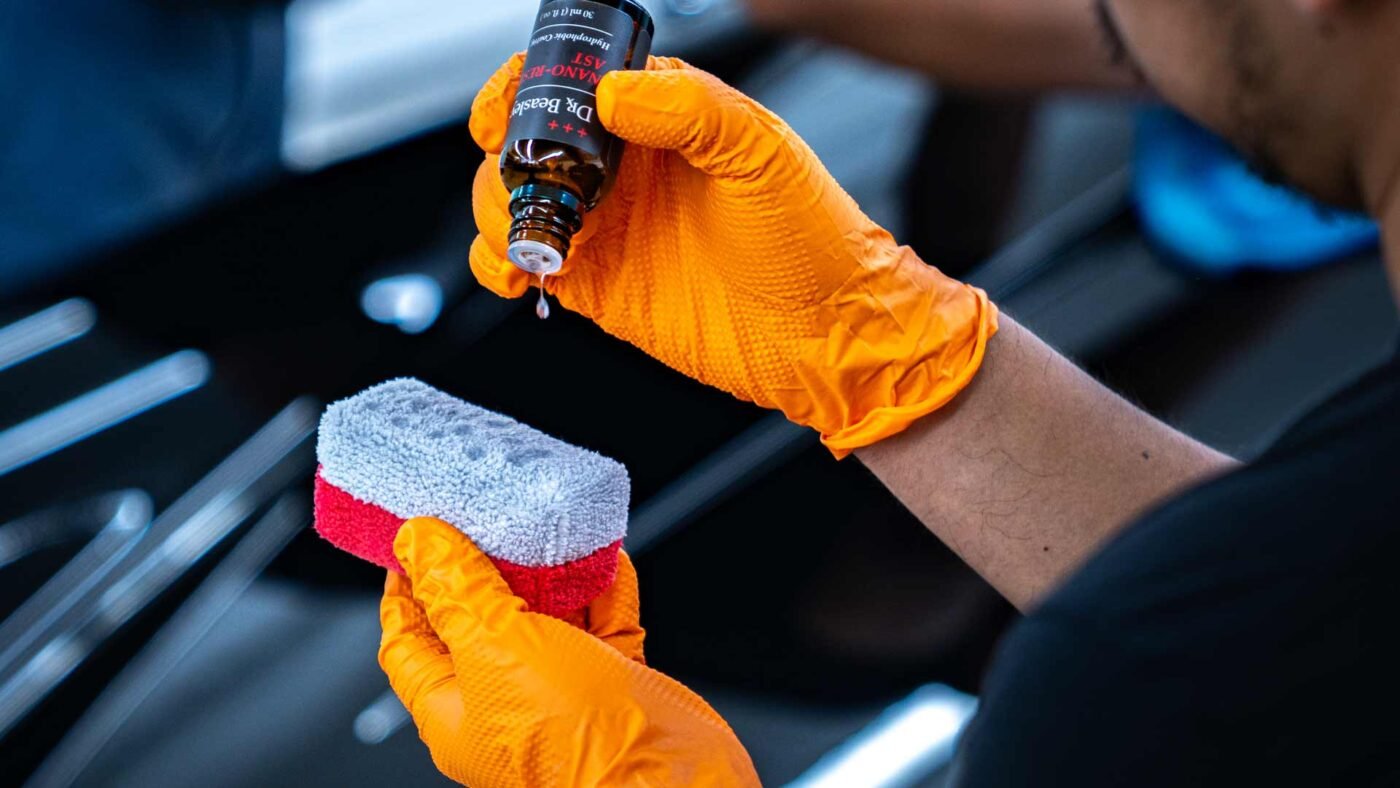
Why This Matters for Detailing
Detailing products are chemistry-driven. Advanced nano-polymers, resins, surfactants, and oils all degrade in light. The wrong packaging shortens shelf life and compromises performance.
Our solution:
- Everyday products in amber PET — tough, recyclable, protective.
- Premium coatings in amber glass — maximum protection for the most advanced chemistry.
Packaging Is Part of the Formula
At Dr. Beasley’s, packaging is not an afterthought. It’s part of the science.
Amber PET bottles protect the everyday products you use most. Amber glass bottles safeguard our most advanced, precious, and expensive coatings.
Both choices are deliberate. Both are science-driven. Both reflect our commitment to doing things the right way, without compromise.
When you see amber bottles from Dr. Beasley’s — whether PET or glass — you can know two things:
- What’s inside is protected.
- The brand behind it values science over shortcuts.
For us, “good enough” has never been good enough.

Jim Lafeber CD-SV, RIT
Founder, President & Chemist
Dr. Beasley’s, Inc.

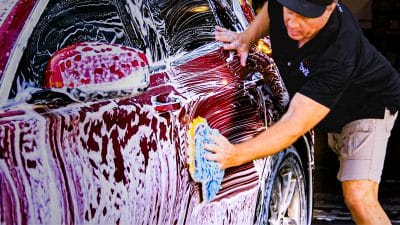

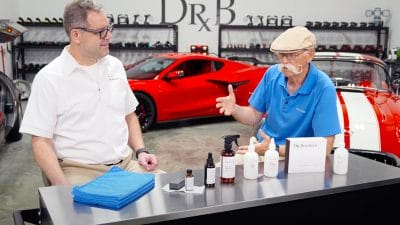
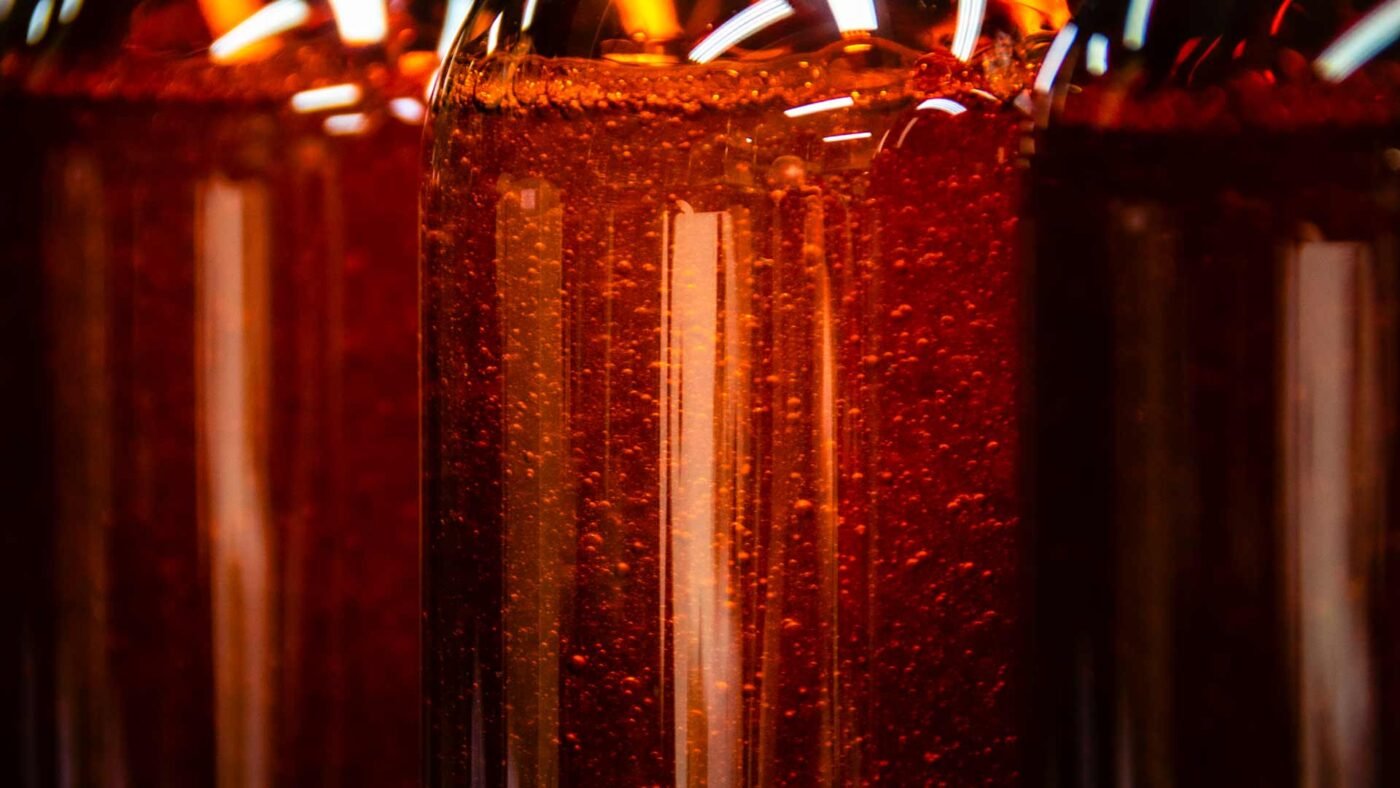
Questions? Comments?
Email Us